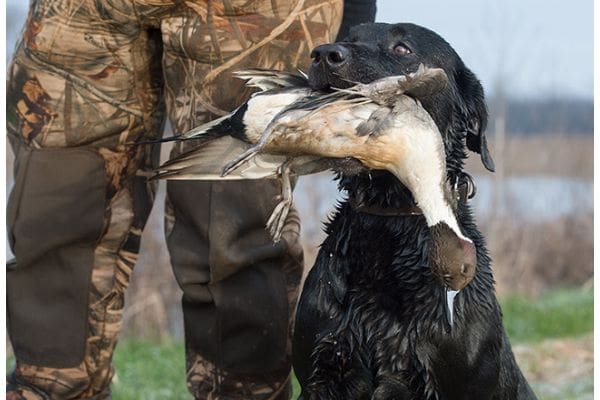New model includes option for three-bird daily bag limit
For the first time in nearly 30 years, duck hunters in the lower 48 states could have the chance to shoot three pintails a day as soon as the 2025-26 season—a possible outcome of an interim population and harvest strategy being put into use by the U.S. Fish and Wildlife Service.
However, it’s important to note that despite a change in the model, the daily bag limit for all future seasons still depends on the pintail populations and habitat conditions on the breeding grounds. The data will become clearer in August when USFWS releases its annual Waterfowl Population Status report. So, despite speculation by other media outlets, there’s no guarantee of a three-pintail bag limit for the 2025-26 season.
Based on a new integrated population model for pintails, the USFWS Regulations Committee on May 17 adopted an Interim Northern Pintail Harvest Strategy to guide setting of regulations for the 2025-26 waterfowl season. The new strategy, which was developed based on banding, population survey, and harvest data, allows four options: Bag limits could be three pintails daily, two, one, or a closed season for the Mississippi, Central, and Pacific flyways. The Atlantic Flyway will have a three-pintail daily limit every season unless the model calls for a closed season in the other three flyways.
“The new model, the new data is some of the best science we’ve ever had on pintails,” said Jerome Ford, USFWS assistant director, during the meeting. “In this application (of the new strategy), we’re trying to learn. The Service Regulations Committee supports the implementation moving forward with the Pintail Working Group proposed Interim Harvest Strategy. The revised strategy addresses stakeholder concerns with the current strategy, and the important technical updates conform with the idea of using the best available science to support harvest management decisions.”
Under Adaptive Harvest Management, which was put into use in 1995 and updated for pintails in 2010, only three regulatory options for pintails exist: two birds daily, one, or closed season. Regulations for the upcoming 2024-25 season are already set: The daily bag limit is one pintail daily in all four flyways.
The USFWS will use 2024 breeding population survey data obtained this spring to determine 2025-26 regulations using the new Interim Pintail Harvest Strategy.
“The biggest difference is the new model factors in the harvest rate, which is the percentage of the population taken by hunters, rather than just looking at the total harvest from the prior year as a predictor of the upcoming season’s harvest,” said Dr. Chris Nicolai, waterfowl scientist for Delta Waterfowl. “The new model makes predictions based on the observed proportion of pintails shot, not on the estimated number of what hunters shot the previous season.”
Delta Waterfowl has invested in research to advance the science of waterfowl harvest management.
“Delta helped fund leading waterfowl researchers who have worked to address questions about pintail harvest and survival through analysis of data, which informed the USFWS Harvest Management Working Group,” Nicolai said.
So, what’s the likelihood of a three-pintail daily limit in 2025-26?
If pintail populations increase from 2023 levels, a three-pintail limit in all four flyways is possible.
“The proposed interim harvest strategy provides for an open hunting season when the observed breeding population is above 1.2 million birds, and allows a liberal season length with a three-bird daily bag limit under some conditions,” according to Todd Sanders, USFWS Pacific Flyway representative. “The appropriate thresholds for each regulatory alternative are derived each year based on the data and learning about population demographics and the predictive harvest models. It is anybody’s guess how likely we are to end up in any one particular regulatory package in a year and how those thresholds may change with data and learning. There is also a major unknown in predicting future habitat conditions and population responses.”
While the exact thresholds for each regulatory option under the new harvest strategy have not been revealed, it’s notable that the cutoff for an open season has been defined as a breeding population of 1.2 million pintails. Under the previous model, season closure would have happened at a breeding population below 1.75 million pintails.
Pintail populations, as reported in the Waterfowl Habitat and Breeding Population Surveys dating back to 1955, have only dipped below 2 million three times—1991, 2002, and 2022. The 2022 population estimate of 1.78 million was the lowest in the history of the survey. Notably, pintails increased to 2.21 million in 2023.
Restrictive harvest regulations for pintails date back to 1985, when only one hen was allowed in the bag during the 1985 to 1987 seasons. Then from 1988 to 1994, the limit was one pintail daily. The last season with a three-pintail daily bag limit was 1997. From 1998 to 2008, the limit was one daily. During the wet years of the 2010s, limits jumped to two daily, before falling back to one again in 2017, and every season since 2019.
There’s acknowledgement that restrictive harvest regulations for the past 40 years have not led to increased pintail populations, and that hunter harvest is not an issue.
Importantly, the USFWS stands ready to institute the new model for pintails to collect three seasons of data under a three-pintail daily bag limit in all four flyways. It could take several duck seasons to have three-pintail limits as the chosen regulatory option, after which the USFWS plans to evaluate the impacts on harvest and the pintail population.
“Evaluation results will be provided to the flyway technical committees for consideration in the development of a proposed operational harvest strategy, which may or may not include an option for a three-bird daily bag limit,” Sanders said. “The Service and flyway councils will annually monitor implementation of the strategy and can address any issues that may arise.”
Delta Waterfowl supports the new pintail harvest strategy based on sound science.
“Delta is glad to play a role in helping to develop the best management strategies for all ducks, including pintails,” said Joel Brice, chief conservation officer for Delta Waterfowl. “Hunters really care, and we all want to do what’s best for the resource. If science shows we can safely harvest additional pintails, then hunters deserve the opportunity to do it.”
Read the full article here




